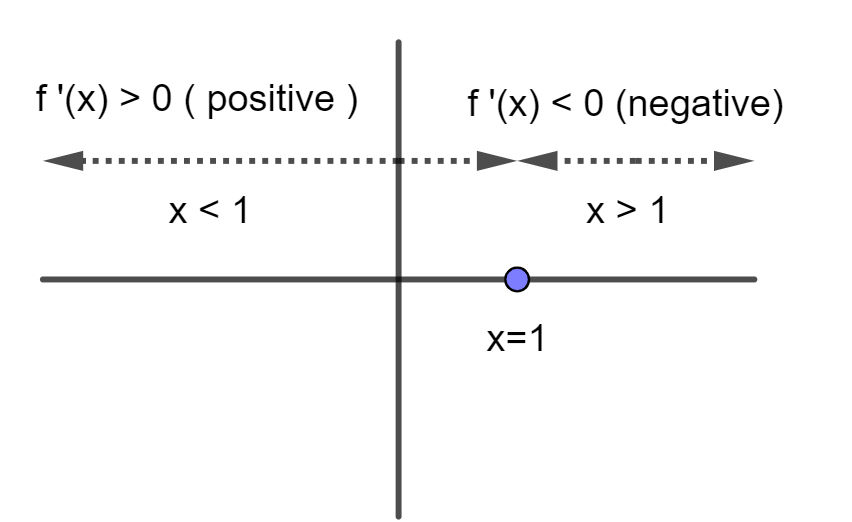Question
Question: Select the correct statement from \(\left( 1 \right),\left( 2 \right),\left( 3 \right)and\left( 4 \r...
Select the correct statement from (1),(2),(3)and(4). The function f(x)=xe1−x ;
(1) Strictly increases in the interval (21,2)
(2) Increases in the interval (0,∞)
(3) Decreases in the interval (0,2)
(4) Strictly decreases in the interval (1,∞)
Solution
To solve this type of questions, there is a sequence of steps which needs to be followed.
(1) Calculate f′(x) that is the first derivative of the given function with respect to x.
(2) Put f′(x)=0 to find the critical values.
(3) If we get multiple values then arrange them in ascending order, for example if we get x=2,3 .
(4) Define the intervals like this ; the first one would be always from −∞ to first critical point , example: (−∞,2) , second interval will be from first critical point to another like here (2,3) and the last one will be from last critical point to ∞ , example: (3,∞).
(5) Check the sign of f′(x) for each interval to analyze the behavior of the derivative .
Complete step-by-step solution:
We know that, (1) f(x) is strictly increasing when f′(x)>0 ( positive ) and (2) f(x) is strictly decreasing when f′(x)<0 ( negative ) . So, first we need to differentiate the given function; f(x)=xe1−x .
⇒f(x)=xe1e−x
Simplifying the above function, to convert it into fractional form so that it can be easily differentiated;
⇒f(x)=exxe
The above function can be solved by the division rule of differentiation;
\left( {\because \dfrac{d}{{dx}}\left\\{ {\dfrac{u}{v}} \right\\} = \dfrac{{\dfrac{{du}}{{dx}} \times v - u \times \dfrac{{dv}}{{dx}}}}{{{v^2}}}} \right)
Let u=xe and v=ex ;
∴f′(x)=(ex)2(e)×ex−(xe)(ex)
Taking ex outside in the numerator;
⇒f′(x)=e2xex(e−xe)
On further simplification;
⇒f′(x)=exe(1−x)
Since e is Euler’s number ( also the base of natural logarithm ) and it has a constant value approximately equal to 2.71828 , therefore the factor exe is always positive or exe>0 .
So, to analyze the behavior of the function we have to only check the factor (1−x) .
Put (1−x)=0 to find the critical point;
⇒−x+1=0
⇒x=1
Let us consider two intervals , when x∈(−∞,1) and x∈(1,∞) ;

Figure (1) : Nature of function f′(x) when x≻1 and x<1
Now, let us check our options one by one;
(1) Strictly increases in the interval (21,2)
This condition is clearly not true since for x>1 the function f′(x) is negative means decreasing.
(2) Increases in the interval (0,∞)
This condition is also not true as our function is positive for x<1 , drops to zero at x=1 and then decreases from x≻1 .
(3) Decreases in the interval (0,2)
This is clearly not true as we can see from the figure that for x>1 the function starts decreasing , the critical point is one not zero for this function.
(4) Strictly decreases in the interval (1,∞)
This option is true since our function f′(x)<0 means strictly decreasing for x>1 onwards .
Therefore, the correct answer for this question is option (4) .
Note: There can be some confusion about increasing or decreasing and strictly increasing or strictly decreasing functions and what exactly does the term strictly means. If there is a function y=f(x) then this function is said to be increasing when the value of y increases with increase in the value of x i.e. they can have a positive gradient (slope) or a zero gradient (no change in value of y as value of x changes ) . On the other hand, strictly increasing functions always have a positive gradient, although they can have a zero gradient provided that the zero gradient acts as an inflection point ( where the function changes its sign) .
